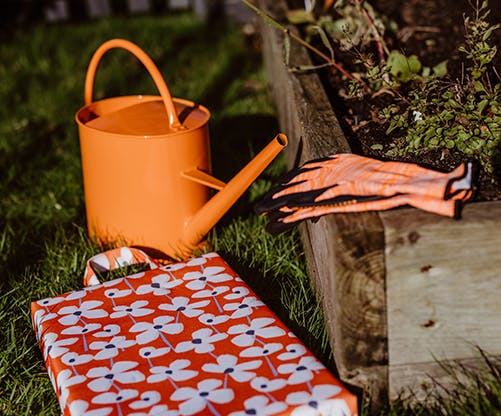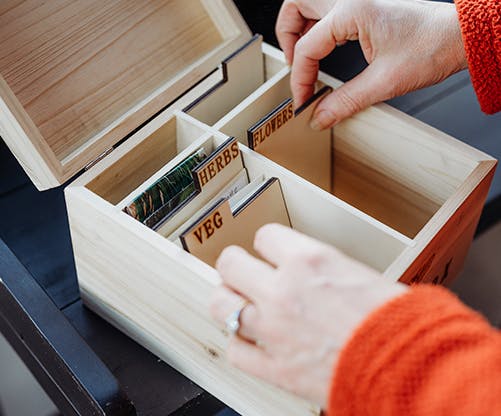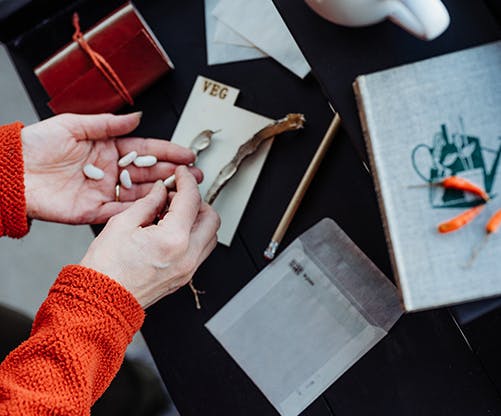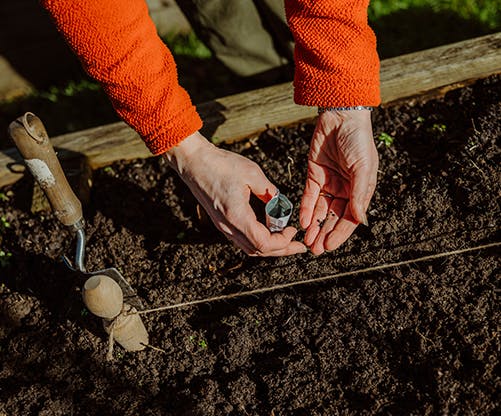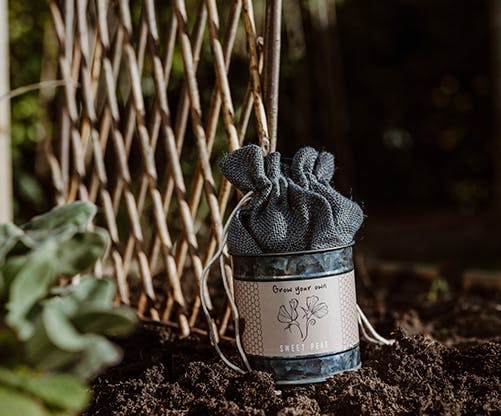Getting Your Garden Spring-Ready
With the colder weather on its way out it’s time to start thinking about how we can refresh our gardens, windowsills, and allotments. Your plants might be looking a little sad after the chilly spell and the wind might not have been kind to your pots and planters, so let’s see about sprucing things up a bit. If you’re a keen gardener, want to learn a little more or simply want to add a fresh touch with garden ornaments, take a look at our helpful tips and tricks below. You’ll soon have a special space that makes you smile.
Add colour before the flowers bloom
Spring is just on the horizon, so while you wait for the flowers to bloom, there are other ways you can add colour, like introducing pops of colour to your windowsills, patios and other outdoor spaces with bright pots, planters, and characterful ornaments. While there’s still chances of frosts, you can prepare things for the warmer weather below the soil by planting colourful plants such as bright Crocus, Tulips, Bluebells and Hyacinths. You don’t have to limit your new look to green and growing categories - if you have seating outside or place you like to sit inside when you open the windows, add bright cushions and throws with fun patterns. And while those dark evenings are still lurking about, use solar lights around your fencing, windows or even your pots for a homely, inviting glow once the sun goes down.
Our favourite ‘get out there’ ideas
Getting some fresh air is important for your mental and physical wellbeing, especially with spending more time indoors than ever before. During winter is challenging to say the least, but with spring comes brighter mornings and more daylight hours , giving you the perfect chance to head outside to stretch your legs and have some fun. Here are some top picks from the team:
- Planting flowers is both therapeutic and exciting as you anticipate your hard work paying off in the coming months, so plant your favourites or something new.
- If you have young children, scavenger hunts make for great family fun. You can write your own list or find one online and print it off. Head out into your garden to find everything from leaves, flowers, birds in the sky or insects hiding in the grass. If you haven’t got a garden, take your little ones for a walk around your local area where they can safely explore and find all their scavenger hunt goodies. They can even collect a few bits to bring inside and make their own nature jar.
- Get crafty by drawing and painting things you see outside or try out leaf rubbing art (where you place a leaf underneath paper and run crayons and pencils over the top to pick up all of the details).
- Exercising outside is a great way to take in the fresh air while getting your blood pumping. Running on the spot, star jumps, skipping, hopscotch or even a fun little boogie to some music all work wonders.
Spring clean your garden
It isn’t just inside our homes that benefit from a good spring clean, so before you start adding any new plants, pots or ornaments, it’s important to give your space a good clear out. Weed the area, throw away any plants that haven’t made it through the winter, dead head what is left and cut things back to help them thrive come the spring. Sweep your floors, rake the grass, and remove any unwanted bits that have become caught in your plants and beds. If the soil in your pots and window planters or pots on your windowsill is more than 12-18 months old, replace it to introduce new nutrients and a good base to plant or re-pot in again.
Ways to sow, grow and pick your own
After almost a year of lockdowns and tiers, we’re relishing the opportunity to get outside, and if you’re lucky enough to have an outside space, even a small garden or balcony, gardening can feel so good for the body and the soul - harvesting fresh veggies and cut flowers too. Keep reading for top tips to sow, grow and pick your own vegetables and flowers from brand new (but enthusiastic) gardener, Sarah.
1. Planning & Preparation
Early in the year is the best time to draw out a plan of your garden and list of the vegetables you know will taste best fresh from the garden and which can cost a lot in the shops. Grab yourself a notebook and work out what you might like to grow in the space you have available.
If you don’t have a lot of ground space you can grow most vegetables in pots and containers, even window boxes too so don’t forget to plan those areas and consider what seeds you have already.
Think about things that are expensive in the shops like salad crops and fresh British strawberries and imagine all the wonderful meals you can make for free!
If you want some extra help and inspiration look out for second hand gardening books, they’re full of great tips that don’t date from preparing soil to what to grow, plus you can also find lots of tips online.
2. Storing Seeds for Continuous Cropping
Think about how you can stagger your harvest by sowing seeds in batches and planting out at different times.
Crops like Lettuce ‘Lollo Rossa’ is a cut-and-come-again variety so you can remove leaves as you need them for a Caesar Salad for lunch or Salad Nicoise for supper. To be sure of giving a continual harvest, do also add new plants as the season progresses.
Once you’ve opened your seed packet, you don’t need to sow the whole lot. Make sure you index and store spare seeds somewhere safe and dry like our Seeds Storage Box to schedule your planting to prolong that supply of fresh homegrown veg all through the spring and summer. A dry wooden box is also a great way to store seeds that you may have harvested from last year. You can use old envelopes and catalogue them with handwritten labels.
At the end of the growing season leave some of your crop to go to seed on the plant to top up your seed store for the following year’s new seedlings and subsequent harvest. Chillies and beans are particularly easy to gather and store.
This is just the start of living the ‘Good Life’!
3. Sowing crops directly into the Soil
Seeds like carrots can be sown directly into the soil. Carrots are best grown in rows and suit somewhere like a raised bed. Prepare the area by weeding the area, mixing in plenty of compost about three weeks prior to planting and making sure it is moist by watering.
At this time of year when the ground is cold and damp it makes soil prep less painful with a cushioned garden kneeler and protective gloves to keep you warm and weather protected.
Use a trowel to mark straight rows about 1cm deep and use twine for nice straight lines and a marker to name your crops. This will remind you where your carrots are planted to spot the difference between tiny seedlings and weeds as they germinate!
Rows should be about 2.5cm apart to give enough space for your crop. Carrots benefit from feeding at 8cm tall and again at 15cm. You will need to thin out the plants when the foliage is about 8-10cm tall, with carrots ready to pick 65 to 85 days.
Try to remove stones from the soil or you might get some funny shapes as objects disturb straight growth – but that’s all part of the fun of homegrown veggies!
4. Grow your own Fresh Cut Flowers
When it comes to fresh, fragrant flowers to cut-and-come-again for your home, sweet peas are the colour-rich beauties that just keep giving. A traditional cottage garden flower, the more you pick, the more they’ll grow, bringing heady natural scent into every room.
Our Grow Your Own Sweet Pea Flower Tin has everything you need to enjoy fresh cut flowers just 12 weeks after sowing. Start off by soaking seeds overnight in a ramekin dish with water to give them a head start in germinating.
Prepare your compost by soaking and mixing the pellet in a recycled tub. It grows like magic! Then plant one or two seeds in a loo roll filled with compost to create deep narrow channels that put down strong, long roots. Pop these together in a recycled food packaging tray to keep soil moist.
Once the seedlings become established nip out the tops for bushier plants with lots of shoots to produce more flowers. By April they are ready to plant out in a sunny spot.
First, you will need to create supports for your sweet peas to climb up. We used a recycled timber frame and bamboo cut from the garden held in place with D rings. You can also use any sort of trellis or support and add extra support weaving string between the canes. So long as the tendrils have something to cling to they will grow well.
Keep your plants well-watered and once they begin to flower, just cut the sweet peas often and remove any seed heads to encourage the flowers to continue to bloom all season.
Don’t forget to repurpose any of our tins as extra planters – just hammer holes in the base with a nail - for drainage.
Our team also found the little hessian bag was perfect for carrying their flower cutting scissors, string and garden ties around the garden.

